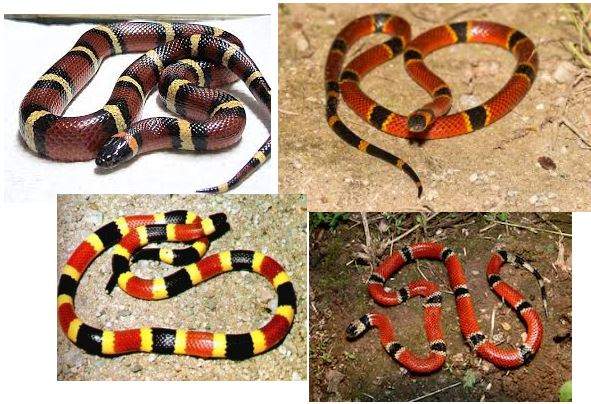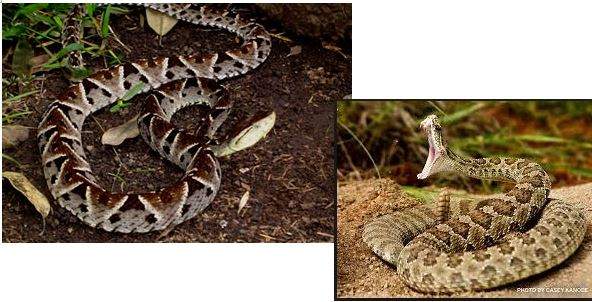
When I heard that a friend who lives here had been bitten by a poisonous snake and spent a week in the hospital recovering from the bite, it got me thinking. Now, I, for one, am scared to death of snakes, and thinking about them is not on my to-do list. I come from New England, and even the simple non-poisonous garter snake gets my knees a-shaking and my heart a-pumping.
I recently read that snakes probably evolved from burrowing lizards and are limbless. All are carnivores, but capture their prey differently. Several species have glands that evolved to manufacture venom which is injected into their prey through their teeth. The venom immobilizes and kills the prey. Other snakes wrap themselves around their prey, constricting until the prey suffocates. The majority of snakes are non-venomous and rely on their strong jaws to subdue prey. Snakes rely on smell and vision to locate prey. Two families of snakes have thermal sensor organs on their heads that detect heat from other animals.
Snakes have the ability to swallow prey larger than their heads. That means they can devour prey larger than themselves so they don’t have to eat as frequently as other species. This allows them to spend time in their dens hiding from their own predators. Hawks, other predatory birds, and some mammals are always on the lookout for snakes. The different colorings of snake skins allow them to hide in their natural environment.
In Mexico, there are a bout 250 species of the Family Colubridae, the colubrid snakes. Most of these are non-poisonous, or if venomous, dangerous only to small prey such as rodents and lizards. Sixty or so of these species live within the Yucatan region. I also read that scientists who study the Mayan civilization, suspect that some of these larger colubrid snakes were considered good sources of protein, as remains have been found at several Mayan ruin sites.
Although Mexico has more species of venomous snakes, about 60, than any other country in the Western Hemisphere, the average tourist does not have to worry about encountering a venomous snake.

The Family Elapidae is considered the world’s deadliest. Cobras, mambas and the coral snake belong to this family. Coral snakes have a beautiful skin that helps them hide. “Red touches yellow, you’re a dead fellow. Red touches black, you’re okay Jack”. Well, I don’t know about you, but I’d be hightailing quicker than all get out, and forget about the rhyme. I did see a dead coral snake on the road in Akumal a few years ago. It had obviously been run over, but it sure was beautiful.

Boas, from the Family Boidae, kill by constriction. There are about 65 species around the tropical and sub-tropical world. They include Old World pythons and the New World boas and anacondas. The boa constrictor is one of the four boas found in Mexico in our region. This snake can reach up to 19 feet, but typically in our area it’s between 5 and 8 feet long. Because of their coloring, they camouflage themselves quite nicely.

Vipers come from the Family Viperidae. There are around 45 species in Mexico. The deadly Fer-de-Lance, is one of the New World’s most deadly snakes. This snake is abundant around the Yucatan Peninsula and in parts of Chiapas and Oaxaca. It lives in lowland areas and we should not worry about them in busy tourist areas.
I think this sums up any encounter you may have with a snake: “Remember, snakes, like traffic cops, lack a sense of humor”. Unless you’re an expert, give a wide berth to any snake you might encounter, here in Mexico, or from wherever you hail. I am hardly an expert and will always treat any snake I might encounter, with the utmost of respect.

WE LIVED IN PAAMUL AND THREE TIME CAME ACROSS FER DE LANCE! I THINK THEY ARE MORE COMMON THAN BELIEVED. TWO IN GARDEN AND ONE IN A CEMENT BUILDING BLOCK. ALL WERE DISPOSED OF BY OUR MAYAN FRIENDS.
So where would you go for treatment of a snake bite?
This is just a guess, but probably to the emergency room of any of the hospitals in Tulum or Playa del Carmen.